Wan-Ting Hsieh
Behavior Score-Embedded Brain Encoder Network for Improved Classification of Alzheimer Disease Using Resting State fMRI
Nov 04, 2022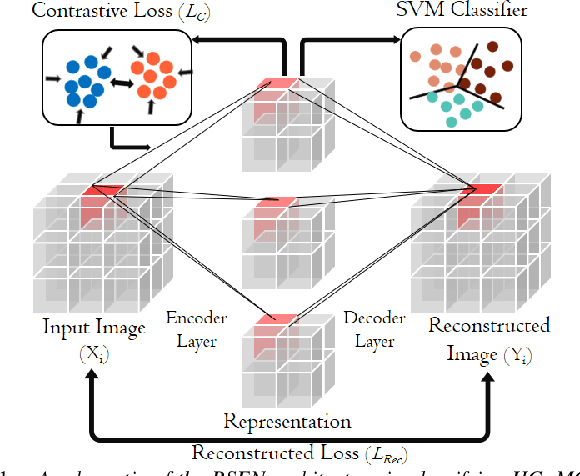


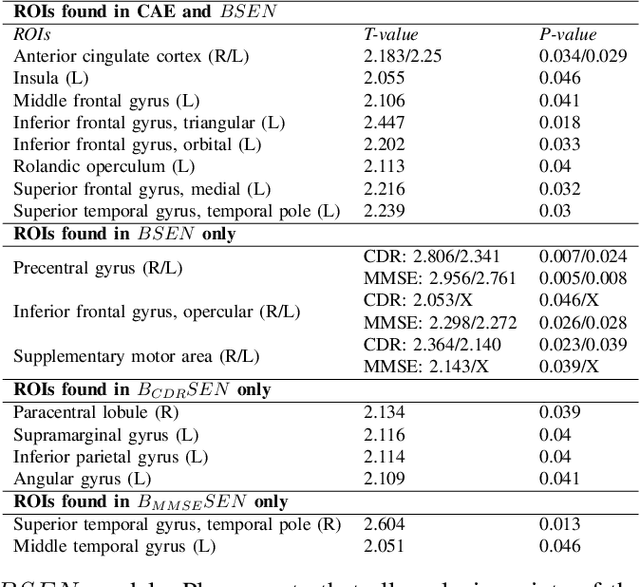
Abstract:The ability to accurately detect onset of dementia is important in the treatment of the disease. Clinically, the diagnosis of Alzheimer Disease (AD) and Mild Cognitive Impairment (MCI) patients are based on an integrated assessment of psychological tests and brain imaging such as positron emission tomography (PET) and anatomical magnetic resonance imaging (MRI). In this work using two different datasets, we propose a behavior score-embedded encoder network (BSEN) that integrates regularly adminstrated psychological tests information into the encoding procedure of representing subject's restingstate fMRI data for automatic classification tasks. BSEN is based on a 3D convolutional autoencoder structure with contrastive loss jointly optimized using behavior scores from MiniMental State Examination (MMSE) and Clinical Dementia Rating (CDR). Our proposed classification framework of using BSEN achieved an overall recognition accuracy of 59.44% (3-class classification: AD, MCI and Healthy Control), and we further extracted the most discriminative regions between healthy control (HC) and AD patients.
Interpretable estimation of the risk of heart failure hospitalization from a 30-second electrocardiogram
Nov 04, 2022



Abstract:Survival modeling in healthcare relies on explainable statistical models; yet, their underlying assumptions are often simplistic and, thus, unrealistic. Machine learning models can estimate more complex relationships and lead to more accurate predictions, but are non-interpretable. This study shows it is possible to estimate hospitalization for congestive heart failure by a 30 seconds single-lead electrocardiogram signal. Using a machine learning approach not only results in greater predictive power but also provides clinically meaningful interpretations. We train an eXtreme Gradient Boosting accelerated failure time model and exploit SHapley Additive exPlanations values to explain the effect of each feature on predictions. Our model achieved a concordance index of 0.828 and an area under the curve of 0.853 at one year and 0.858 at two years on a held-out test set of 6,573 patients. These results show that a rapid test based on an electrocardiogram could be crucial in targeting and treating high-risk individuals.
A Mixed-Domain Self-Attention Network for Multilabel Cardiac Irregularity Classification Using Reduced-Lead Electrocardiogram
Apr 29, 2022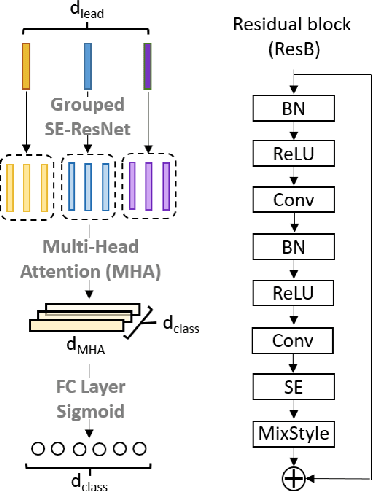
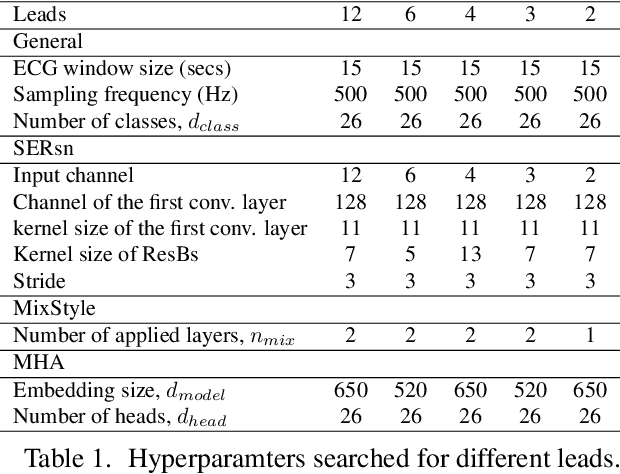
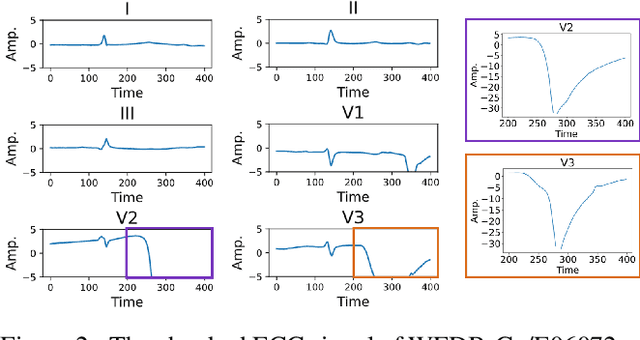
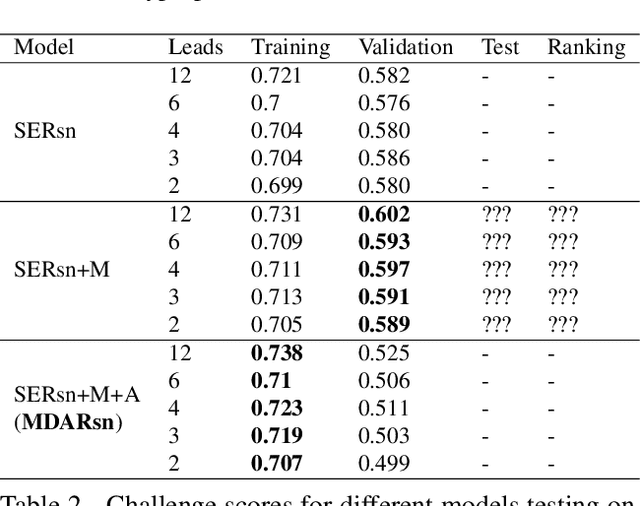
Abstract:Electrocardiogram(ECG) is commonly used to detect cardiac irregularities such as atrial fibrillation, bradycardia, and other irregular complexes. While previous studies have achieved great accomplishment classifying these irregularities with standard 12-lead ECGs, there existed limited evidence demonstrating the utility of reduced-lead ECGs in capturing a wide-range of diagnostic information. In addition, classification model's generalizability across multiple recording sources also remained uncovered. As part of the PhysioNet Computing in Cardiology Challenge 2021, our team HaoWan AIeC, proposed Mixed-Domain Self-Attention Resnet (MDARsn) to identify cardiac abnormalities from reduced-lead ECG. Our classifiers received scores of 0.602, 0.593, 0.597, 0.591, and 0.589 (ranked 54th, 37th, 38th, 38th, and 39th) for the 12-lead, 6-lead, 4-lead, 3-lead, and 2-lead versions of the hidden validation set with the evaluation metric defined by the challenge.
 Add to Chrome
Add to Chrome Add to Firefox
Add to Firefox Add to Edge
Add to Edge